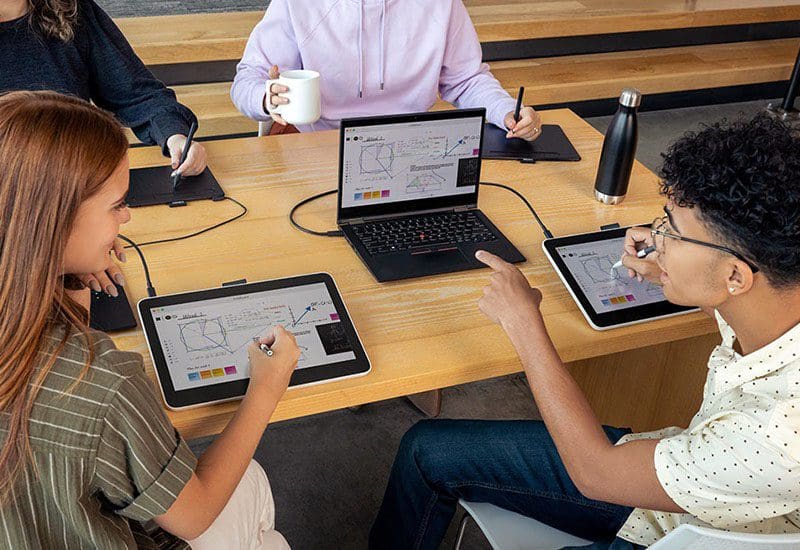Igniting Passion and Innovation: Encouraging Educators to Embrace Digital Arts Education
Laying the Groundwork Together for Prosperous Careers in the Digital Arts Realm
Kelsey Young, Copywriter and Media Specialist
5 Min Read

Technical education programs offer project-based learning, which simulates real-world scenarios and requires students to solve problems creatively and efficiently. Digital Arts rigorous curriculums teach students to bridge the gap between technical expertise and creative expression, playing an essential role in several employment sectors.
If you are not familiar with the booming fields of Digital Arts, you might have one or several misconceptions.
It’s not a real career.
It’s not an in-demand job.
It’s just for entertainment and gaming.
It doesn’t require technical skill.
You can’t make a good living.
Digital artists can be replaced with AI.
In truth the Digital Arts encompass a range of viable and lucrative career paths, in industries like marketing, web and mobile development, publishing, fashion and retail, education and e-learning, medical and scientific fields, product design, automotive, video production, event planning, museums and cultural institutions, and more. Human intuition and creativity are the core of digital arts. While certain aspects of digital arts can certainly be aided by automation, the creative and decision-making processes cannot be replicated by machines.
Engaging in digital arts through technical education emphasizes the practical application of skills. Students gain hands-on experience with the latest software and tools, making their transition into the workforce smoother.
However, when parents are involved and students are invested in the learning process, particularly in fields as versatile and dynamic as digital arts, it helps students recognize that digital arts provide viable and rewarding career paths that combine creativity with technology.
7 Strategies to Engage Parents and Students
Fostering success in Digital Arts Career and Technical Education (CTE) programs requires active and sustained engagement from both parents and students. Here are seven ways educators and institutions can promote this partnership:

Open Communication Channels
Establish a consistent and open line of communication with parents through newsletters, emails, and social media. By providing regular updates on curriculum developments, upcoming events, and students’ progress, parents can stay informed and feel more connected to their child’s education.

Interactive Events
Host interactive events such as open houses, digital art showcases, or tech fairs where students can display their projects. These events allow parents to witness firsthand the skills their children are acquiring and understand the practical applications of their learning.

Parent-Student Workshops
Organize workshops where parents and students can learn together. For example, a session on digital photography or web design can be an enjoyable and educational experience that also demystifies the subject matter for parents.

Career Pathways Presentations
Provide information sessions on various digital arts career pathways, featuring guest speakers from the industry. This can illuminate potential career options for students and help parents understand the long-term value of a digital arts education.

Mentorship Programs
Develop mentorship programs that pair students with professionals in their field of interest. Involve parents in the process by keeping them updated on the mentorship progress and encouraging them to participate in related activities.

Parent Advisory Committees
Create advisory committees that include parent representatives. These committees can give feedback on program development, help with networking opportunities, and assist in identifying industry trends that could influence the curriculum.

Financial Planning Assistance
Offer guidance on financial planning for post-secondary education in digital arts. Educators can provide information on scholarships, grants, and other funding sources to help parents and students plan for future educational expenses.
By employing these strategies, educators can create an inclusive and supportive environment that not only encourages student success in digital arts but also builds a community of parents and educators who work together to enhance the educational experience.
Forging a Path Together
As students become skilled in areas like graphic design, animation, or digital imaging, they not only prepare for specific jobs but also develop a flexible skill set that is increasingly valued across industries. This versatility can lead to greater job security as students are able to adapt to various roles in the evolving job market. Moreover, parents who understand the scope of these careers are more likely to support their children’s interests and educational pursuits, which can lead to a more focused and dedicated approach to learning.
As these students enter the workforce with their fresh perspectives and digital expertise, they contribute to the creative economy and stimulate innovation within the sector. This influx of talent can lead to the development of new products, services, and even industries, underpinning economic development.
Additionally, when parents are engaged, they can become advocates for the importance of digital arts and technology within education systems, helping to ensure that these crucial programs receive the support and funding they need to continue nurturing future generations of digital creatives.
GDC and the Digital Arts
Support your school’s digital arts programs with the GDC and the right technology. With partners such as Dell, Lenovo, HP, Microsoft, and Wacom, GDC can evaluate your current infrastructure and suggest the right upgrades for your students.
Our company has a secure depot facility that has the capacity to receive and store up to ten thousand systems in our warehouse. Whether deploying laptop or desktop PCs, our technical team uses our high-speed, dedicated internal network to set up and deploy OEM and custom hard drive images.
Considering a new hardware refresh? There is still time in the year to procure new hardware. Contact us to get your orders in now to get the invoice on this current budget year. Lead times may be increasing.




